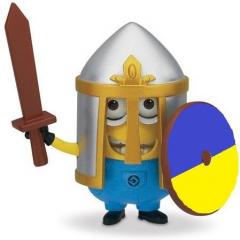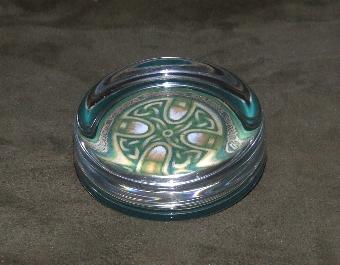-
Posts
5,931 -
Joined
Content Type
Profiles
Forums
Events
Blogs
Gallery
Everything posted by fredk
-
An aside; Henry Ford chose to use Chrome-Vanadium Steel for the chassis (frame) members on his Model T car where competitors were using mild steel supported by teak wood. The Ford T Chassis was known for its flexibility without breaking, its overall strength and lightness compared to the others. Over 100 years on original T chassis are still in use whereas chassis on the other cars have been changed many years ago
-
Some sellers are promoting a foot corn remover as a skiver. It uses razor blades https://www.ebay.co.uk/itm/233302066452?hash=item3651e30514:g:kEUAAOSwPkBadBzh It doesn't work
-

Scalloped leather trim, with and without dots needed
fredk replied to OldRedMule's topic in Suppliers
I found a one-off https://www.ebay.co.uk/itm/114999691410?hash=item1ac6840892:g:OGAAAOSw00phR2Yd -

Scalloped leather trim, with and without dots needed
fredk replied to OldRedMule's topic in Suppliers
So far I've found the ebay seller I bought the fringe from https://www.ebay.co.uk/itm/281084271280 They are now doing it in 410mm lengths - about 16 inches Still looking for the other one, the scalloped type -

You can't afford starting with leathercraft?
fredk replied to Danne's topic in Leatherwork Conversation
Back to the original OP intro When I started seriously in this leatherwork lark I used tools I had in my shed. I fortunately had a large amount of odd tools. Plenty of hole punches, plenty of various knives, straight edges, squares. It was simply a matter of looking at a tool and seeing if it would do a job on leather For cutting I used my old and trusty Stanley knife, (aka a box cutter knife?) (now owned for 52 years, but not the blade! & still used) heavy duty shears and even tin-smiths shears. For an awl I sharpened a wood working bradawl I bought linen thread on wee cards at a haberdashers. 10m of thread with a needle for about £1 I got ready rivets at a shoe repair shop, at 20p each, very dear but then that was the only place I knew to get them Skiving? never heard of it I got my leather from a special recycling shop. There used to be places that companies could off-load their decent waste. It was sorted and schools and play-groups could take what they wanted for use in childrens' arts. They mostly ignored the leather. My wifey owned a children's nursery school so she went there often and brought me back bags full of leather. Writing this reminds me that I still have a couple of decent sized boxes full of it! As time went on and I read more of Al Stohlman's and other books the odd tools were changed to better quality proper leatherwork tools. Along the way I did buy some real rubbishy tools but they in turn were replaced. Some of those really crap tools came from the main names in leather work and some really good tools have come cheaply from 'no-name' places. My first efforts were half-decent. Others in my medieval history presentation group were happy to buy the items and ordered more even though selling was not my intent. I was making kit for me & family primarily. I'm the sort of person who strives to get as good as possible in as short a time as I can eg, I passed my motorcycle driving test in an August and by the following April I was an instructor & driving examiner, I took up Fencing and within 6 months I was good enough to represent N.I. in competitions. Bad tools and skill will do a job. Good tools and skill will do a better job, or make the job easier -
Don't just leave us with that cliff-hanger, damn you !
-
I no longer worry about that. I just buy and see. On items sold here 100% of times the thing is made in some anonymous Chinese factory. The 'named' companies buy them in cheap and have them packaged in their brand packing. The other Chinese sellers buy the over-stock, excess supply, sell locally or globally thru the likes of ebay This is not based on my opinion but on reports from our trade & consumer watch-dogs, both independent and government bodies. An example; I used to buy those blades, with two oval holes, for my skivers from Le Prevo. I was told the Tandy ones were superior. I bought some from Tandy. They came in the same package, only a different 'named' insert. Both said 'Made in China'. The next lots I've bought are direct from China they come in the same package as the Tandy one, even to the colour etc of the card insert but that doesn't say 'Tandy'. But buying direct the blades are 1/10 the price of the Tandy or Le Prevo blades. Cheap enough just to change blade frequently
-
Abebooks has some paper copies available See if any of these are suitable https://www.abebooks.co.uk/9783741898839/Sattler--Riemer--Täschner--Handwerk-374189883X/plp
-
I have one of those glass slickers but find it very limiting. Only an edge corner can be used. Mine cracked and chipped on one edge, a glass fault line. I smoothed that and when I went to buy a new one for a spare and saw the prices I went looking for glass paper weights. I now use a couple of glass paper weights which I got for about £1 each. One is a flat block about 2cm thick by 107 mm by 65 mm. Top side has rounded corners. The other weight is a flat disc about 70 mm diameter by 2 cm thick, top is flat but the edge is rounded. Both are easy to hold. With these the whole top can be used, covering a greater area You can often find glass paper weights at charity / thrift shops for only £1 or a $1. I've ended up with a selection of them, not all for leather work tho edited to add; for smoothing the back of leather I apply beeswax, rub it well in with a cloth then burnish it smoother with one of my glass paper weights and some of my glass paper weights I got these three for under £5, of these I use the block at front and the round one top right A flat topped disc shaped one. Fits the hand nicely and does a fine job of burnishing, Cost me £1 + some postage
-

Water based dye
fredk replied to Davm's topic in Dyes, Antiques, Stains, Glues, Waxes, Finishes and Conditioners.
I've found that wood dyes are appreciably lighter on leather. Remember, a water based dye will swell your leather, which will shrink back as it dries out. This can ruin any tooling or stamping. An oil based dye might be better -
An aside; when I had diffs getting small blades for my wood strap cutter I used the blades from cheap plastic pencil sharpeners. At the time I could get the sharpener for about 10p (pence = 1/10 of a £, or about 12c maybe). The blades were just about the right size, just a wee tad (a technical term) thicker than the regular one for the strap cutter
-
Neither. I'd try sponge washing it with a strong lemon juice/water or onion juice/water solution first
-
As above. I use my 60mm a lot on thin leather.. My Fiskars 60mm, retracts the blade for storage, my 28mm, rarely used. has the retractable blade cover. I had a 45mm as well but it had a straight grip and I didn't like it so I gave it away. The 60mm has a stirrup grip and the 28mm head swivels so it can be at any angle I prefer Fabric weight vs blade size - doesn't matter. The 60mm is good for longer straighter or faster cuts, the 28mm better for tighter curves or closer trimming. I've used both on lightweight fabrics and leather up to about 3.2mm (8 oz ?) Its the blade guard which limits the thickness to be cut. On the 28mm the blade is only exposed by about 2.5mm, the 60mm by much more My last bought blade was a 'named' one, cost about £4 for one. Last night I ordered 10 'no name' blades for £6.23
-
You reminded me that I had to check the sharpness of my current blade. Not very sharp so a new one installed. I must now go buy some new blades as that one was my last spare new
-
When I got new blades they had thin oil on them. I think to prevent rust. But I cleaned it off as I don't want mineral oil anywheres near my leather or cloth Good find on the sharpener. Now, do they make one for the 28mm and/or 60mm PS, I gave away my 45mm as I found the 28 and 60 were better
-
Added; Yours is the 45mm blade one. yes? I think its a design 'fault' with the 45mm knife as on the 60mm one there is a plastic bit that goes thru the blade and handle. You cannot tighten that one up so much
-
I have one which is similar Tighten up the nut then back it off just a wee tad (a technical measurement) until the blade rotates freely. Not to the point where you can spin the blade, but it should rotate when a very light pressure is applied to it No need to lube
-
There be a quadzillion things you can make Question 1; what size pieces are we talking about? As well as the good suggestions; you could glue small odd shaped bits on a piece of canvas or heavy cotton and make bags, or glue them on to indoor-flower pots, or glue on to small/medium sized wood boxes Cut into equal sized rectangles and make dominoes
-
I got one from this chap https://www.ebay.co.uk/usr/tuningstarltd?_trksid=p2047675.l2559 He's located in Bulgaria but afair he posts from Germany, and post to me from there was 3 days. It might take a week or two to the US, but it may be worth it (?) The one I got is plain but I don't see it on his list anymore https://www.ebay.co.uk/sch/m.html?item=264500459452&_ssn=tuningstarltd&_osacat=0&hash=item3d9574b7bc%3Ag%3AnEUAAOSwNMZdpuXz&_odkw=&_from=R40&_trksid=p2046732.m570.l1313&_nkw=basketweave&_sacat=0 They are well made. They make a sharp impression. And as you want, wee alignment 'horns' on the corners. See on this one https://www.ebay.co.uk/itm/263862086180?hash=item3d6f67ea24:g:rU8AAOSwfSJbYZb0 TBH, I've only done a few wee lines with my tool, never yet done a full piece Actually, I like the look of this one https://www.ebay.co.uk/itm/264500462164?hash=item3d9574c254:g:h0gAAOSwqApdpucm I just might buy one
-
Problem was/is both the antique and paint use the same solvent. Put on a barrier, aka a resist, or block, first, apply antique, then paint To correct now, put on a resist/block/barrier, then repaint I use a local-to me version of 'Mop & Glo' floor 'polish', which is actually a water thin acrylic varnish
-

Archery Arm Guard - Pattern & Instructions (*pdf File)
fredk replied to Sherkhan1962's topic in Leatherwork Conversation
@Jmartin6192 Its working for me edit to add; on page 1, scroll down to Northmount's 2nd posting of July 18 2018 and hit the link in that. That should get your computer opening and/or saving the PDF file -
I've found that in N.I. things like this go for more money than they are worth as they are bought for 'interior decoration' Near where I used to live is a business which buys up all sorts of odd things and sells it at huge profits for theme pubs / restaurants or ordinary homes. The outward condition of an item does not often mean a higher price. Sometimes items with 'age & patina' sell for much more
-
This seller has it as a PDF ebook on a CD http://survivalpress.org/Verlagsneue-Buecher/Handwerk-Technik/Alte-Berufe/Das-Sattler-Riemer-und-Taeschner-Handwerk-eBook-CD::89.html or here https://pw-media24.de/produkt/das-sattler-riemer-taeschner-handwerk-ebook/




